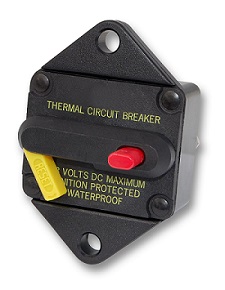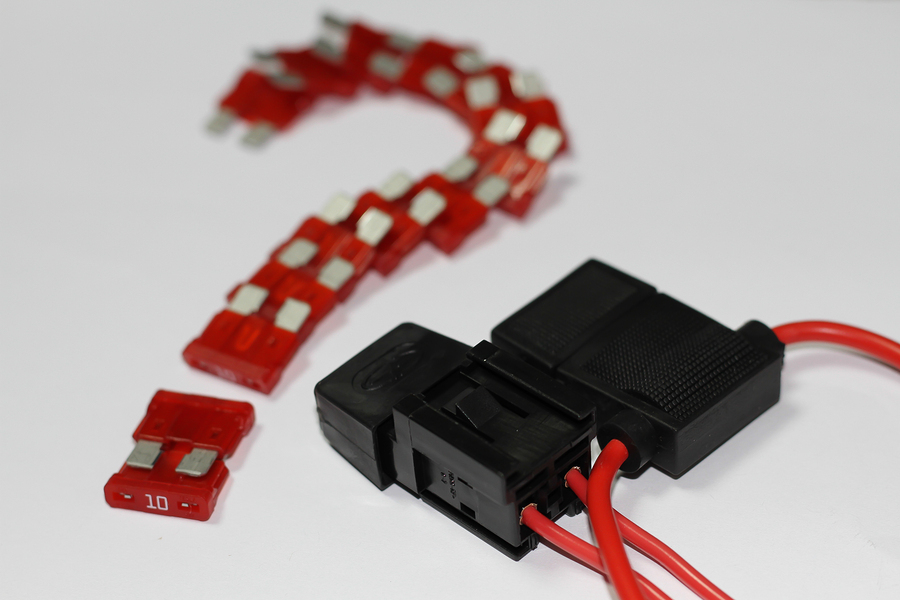How to Select Circuit Protection for Your Application
 Mobile equipment like construction equipment, agricultural equipment, emergency vehicles, boats, and trucks must be designed with safety as a top priority. Not only do these vehicles represent a major capital investment, they're used by humans whose lives could be at stake if safety standards are not met. Any electronic component within a vehicle must be designed for both performance and safety. Many are susceptible to electrical hazards like electrostatic discharge and switching loads in circuits, so protective devices are necessary.
Mobile equipment like construction equipment, agricultural equipment, emergency vehicles, boats, and trucks must be designed with safety as a top priority. Not only do these vehicles represent a major capital investment, they're used by humans whose lives could be at stake if safety standards are not met. Any electronic component within a vehicle must be designed for both performance and safety. Many are susceptible to electrical hazards like electrostatic discharge and switching loads in circuits, so protective devices are necessary.
In today's vehicles, onboard electronics connect to the battery and the alternator. The alternator is often the culprit for transient phenomena like "load dump." This happens when a discharged battery is disconnected while the alternator is generating current and the alternator current continues to service other loads. Electrical spikes can lead to malfunctions and permanent damage to electronic components and could ultimately threaten vehicle reliability and safety.
Fuses
Circuit protection devices protect wires and circuits from problems like load dump, and choosing circuit protection is essential for safe and reliable design. The most basic circuit protection device is the fuse, which is a low-resistance resistor that provides over-current protection. Once a fuse is used, it must be replaced, because it has done its one-time job of protecting a wire or circuit.
There are literally thousands of fuses to choose from for vehicles, because mobile electrical system designs are constantly changing. Battery and alternator cables that require ultra-high current protection typically use high amp AMG, ANN, and ANL fuses, which are mounted in fuse holders designed to stand up to high-vibration environments. Blade fuses, which have a plastic body and prongs that fit into sockets, are also commonly used in low voltage applications. You can choose blade fuses with indicator lights that glow when the fuse has blown, making it far easier to locate and replace blown fuses You may need expert advice when choosing the right fuse for your application.
You may need expert advice when choosing the right fuse for your application.
Breakers
Circuit breakers are resettable circuit protection devices that stop the flow of current in a circuit when there's an overload. A circuit or wire protection device is necessary at the origin of each wiring system whenever the current carrying capacity of the wiring system is lower than the current upstream. If the interrupting capacity of a circuit breaker is not adequate, a wired device can literally explode. Wire protection is critical, and in many cases circuit breakers have to carry current for a considerable time without tripping. Choosing the correct wire protection is an essential performance and safety measure.
Just as there are innumerable types of fuses, there are several types of circuit breakers. These are typically used for auxiliary circuits on vehicles. Determining which circuit breaker is best for your application depends on where the circuit breaker will be mounted, the type of reset method the circuit breaker has, and the current rating you need the circuit breaker to carry. Circuit breakers may reset automatically, or they may require manual reset. Some circuit breakers have a manual trip button that is used for resetting.
Thermal, Magnetic, and High-Performance Circuit Breakers
With thermal circuit breakers, the circuit tripping mechanism is made up of a thermal actuator and mechanical latch that can discriminate between temporary current surges and prolonged overloads. They're great for motor and transformer windings as well as low-voltage power distribution circuits of mobile equipment. Magnetic circuit breakers work extremely fast when specified overcurrent levels are exceeded, but "switch-on surges" must be controlled to avoid repeated nuisance tripping of these. High-performance circuit breakers are designed to work under adverse conditions and are available in thermal and thermal-magnetic versions. Marine vehicles sometimes use high-performance circuit breakers.
Wire and Circuit Protection Summary
The choice of fuse or circuit breaker requires several steps. Engineers may make a preliminary breaker selection early in the equipment design process and then flesh out the detailed breaker specifications as the design proceeds. The right breaker or fuse at the correct point in the design leads to better design and better product value. Circuit and wire protection represent critical choices in design and building of mechanical equipment, and it can be easy to be overwhelmed by choices. Waytek has supplied high-quality electrical parts for wire harnesses and moving equipment since 1970. If you have questions about circuit protection or wire protection, we invite you to contact us. We would be more than happy to discuss your needs with you.
Subscribe Now
Subscribe and be the first to know when new articles are published.
TOPICS
